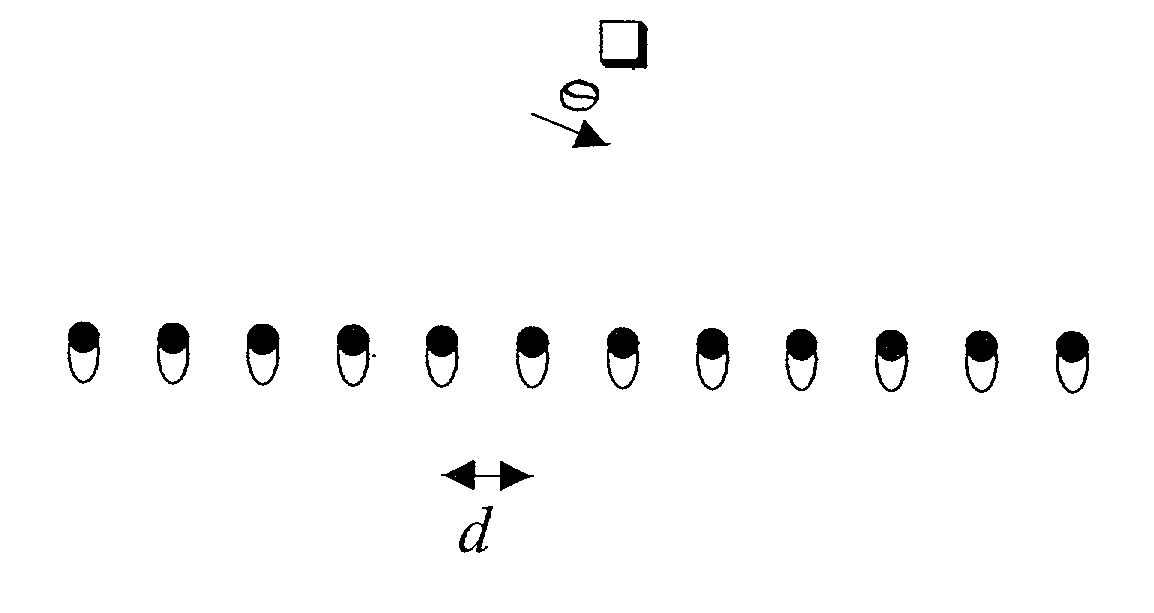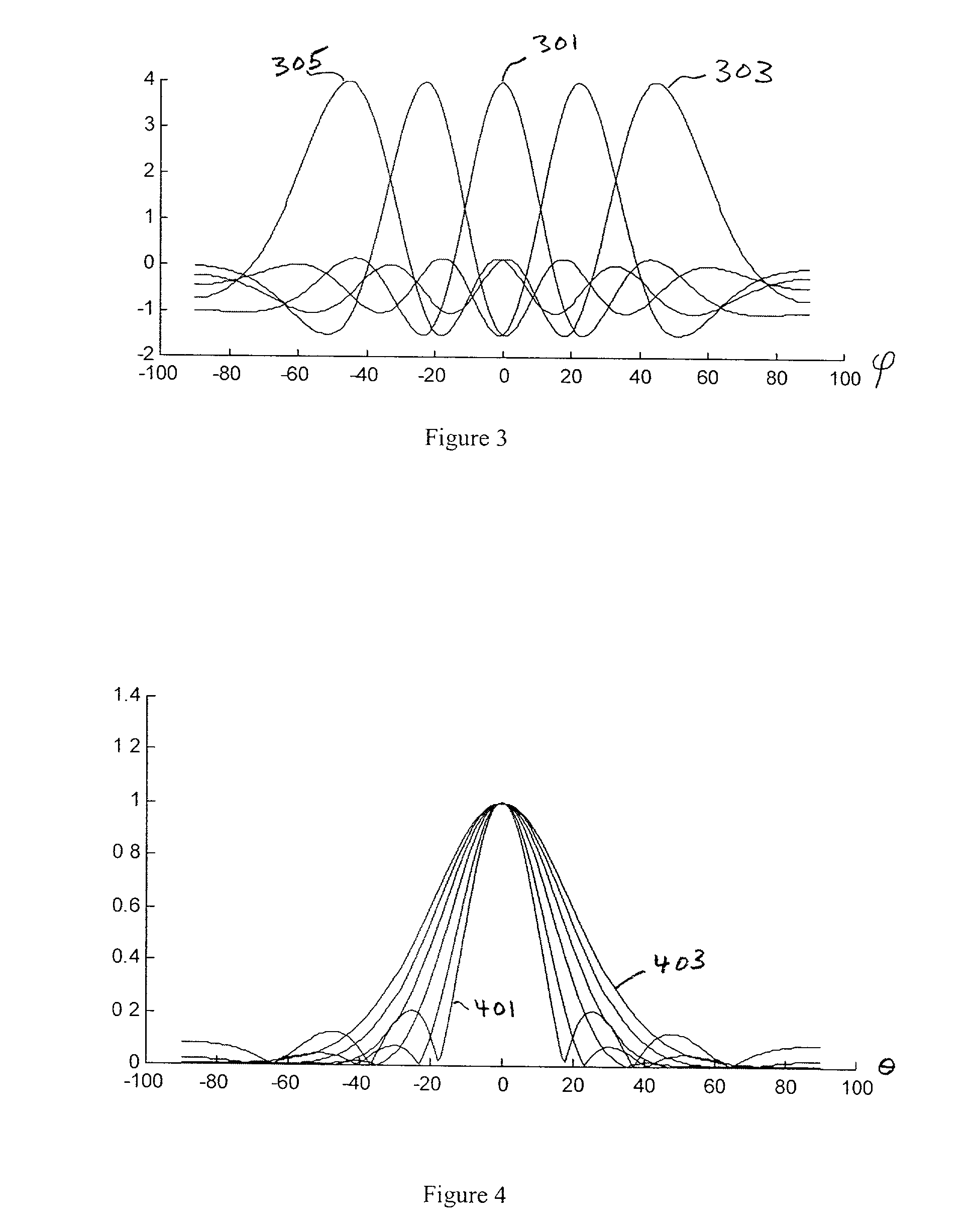Ultra-directional microphones
a microphone and ultra-directional technology, applied in the direction of electrical transducers, piezoelectric/electrostrictive transducers, transducer types, etc., can solve the problems of limited mics in the directionality of response and flatness frequency respons
- Summary
- Abstract
- Description
- Claims
- Application Information
AI Technical Summary
Benefits of technology
Problems solved by technology
Method used
Image
Examples
Embodiment Construction
[0028] The discussion starts with an array of microphones placed at equal distances along a line, as shown in FIG. 1. Let d be their separation. Let a plane wave impinge on the array at an angle of .theta. from the perpendicular to the array. Assume that the plane wave is a sinusoid with a wavelength of .lambda.. If n is the number of microphones, then the response to the plane wave in microphone k can be written as follows: 1 sin ( 2 c ( t + kd c sin ) ) ( 1 )
[0029] For convenience, let the number of microphones be odd, and call the center microphone number zero. The discussion readily extends to the even number case, although the odd case is presented more fully here as it allows a greater degree of microphone sharing between different spacing in arrangements such as FIG. 5. The variable t represents time in seconds. If these signals are summed over all the microphones and simplify, the following is obtained: 2 sin ( 2 ct ) { 1 + 2 k = 1( n - 1 ) / 2 cos ( 2 kd sin ) } ( 2 )
[0030]...
PUM
 Login to View More
Login to View More Abstract
Description
Claims
Application Information
 Login to View More
Login to View More - R&D
- Intellectual Property
- Life Sciences
- Materials
- Tech Scout
- Unparalleled Data Quality
- Higher Quality Content
- 60% Fewer Hallucinations
Browse by: Latest US Patents, China's latest patents, Technical Efficacy Thesaurus, Application Domain, Technology Topic, Popular Technical Reports.
© 2025 PatSnap. All rights reserved.Legal|Privacy policy|Modern Slavery Act Transparency Statement|Sitemap|About US| Contact US: help@patsnap.com



